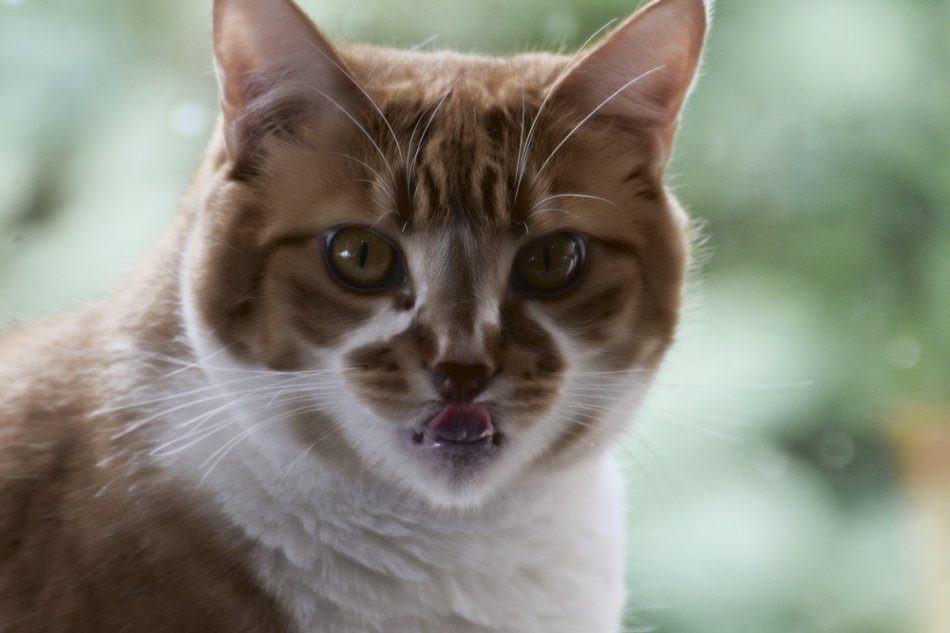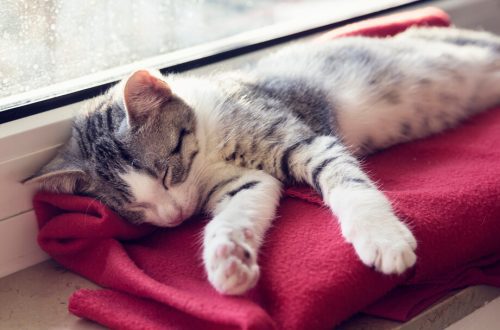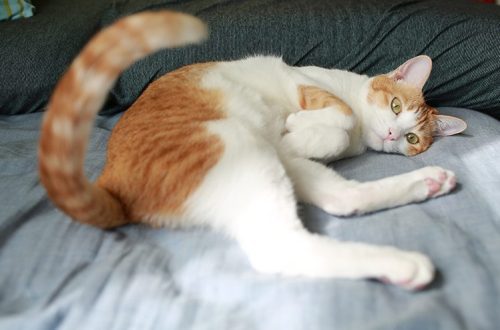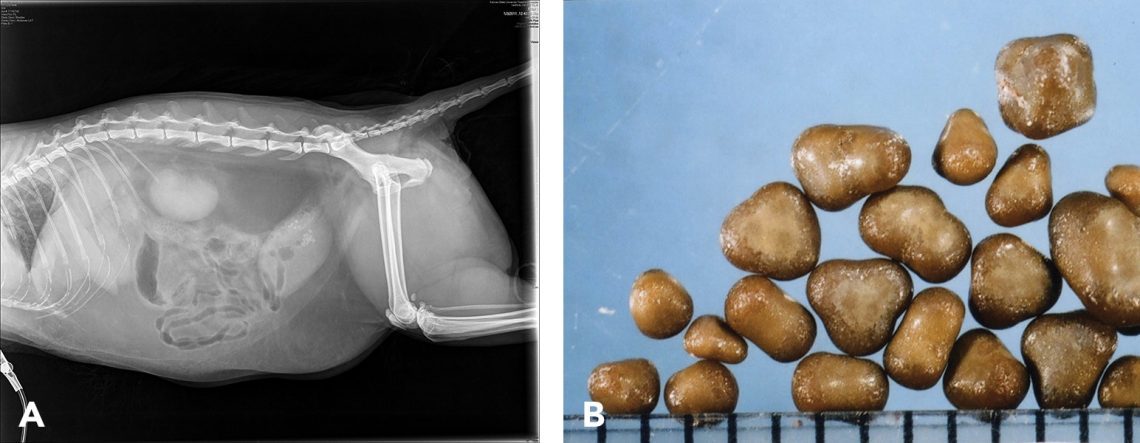
Urolithiasis in cats
Urolithiasis in cats (urolithiasis) – this is the formation of sand and stones in the kidneys or bladder, which, when passing, can linger in the ureters and urethra and be accompanied by the release of blood into the urine.Almost every third animal is susceptible to this disease. 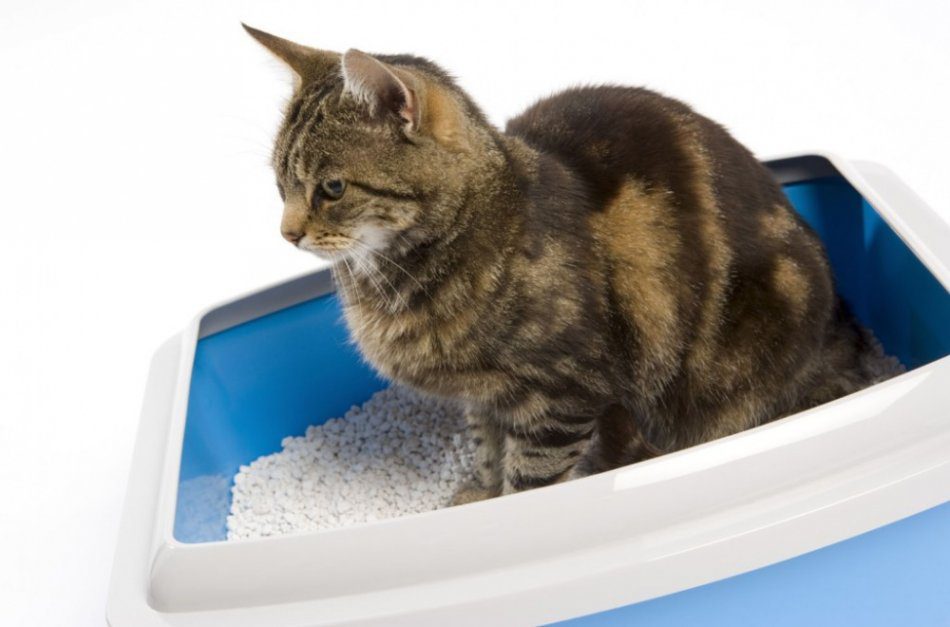
Contents
Risk groups for urolithiasis in cats
- Cats are more susceptible to disease due to the structure of the urinary canals (narrow lumen of the urethra).
- Unsterilized cats. In unsterilized animals, the risk of disease is doubled.
- Age category 2 – 6 years.
- Overweight animals.
- Cats with long hair.
- Castrated cats.
Why do cats develop kidney stones?
Causes of urolithiasis in cats and cats are divided into external and internal.
External causes of urolithiasis in cats:
- Climate (at high temperatures, urine becomes more concentrated, this leads to a decrease in urine filtration).
- Geochemistry (water saturated with lime salts leads to a decrease in urine pH, this results in the accumulation of calcium salts and kidney stones).
- Diet (with a high protein content in food, the concentration of urea in the urine increases). But its absence also leads to urolithiasis.
- Lack of vitamins. Lack of vitamin A has a negative effect on the epithelial cells of the genitourinary system.
Internal causes of urolithiasis in cats:
- Hereditary predisposition.
- Violation of the hormonal balance (in violation of the parathyroid gland, the balance of calcium is disturbed, and its concentration in the urine and blood increases).
- Individual anatomical features of the cat.
- Disturbances in the gastrointestinal tract (in diseases of the gastrointestinal tract, the pH balance is disturbed, and this leads to urolithiasis in cats).
- Infectious diseases of the genitourinary system
- Struvites. Phosphate stones are found in 80% of cases.
- Oxalates (salts of calcium and oxalic acid) (older animals are susceptible.)
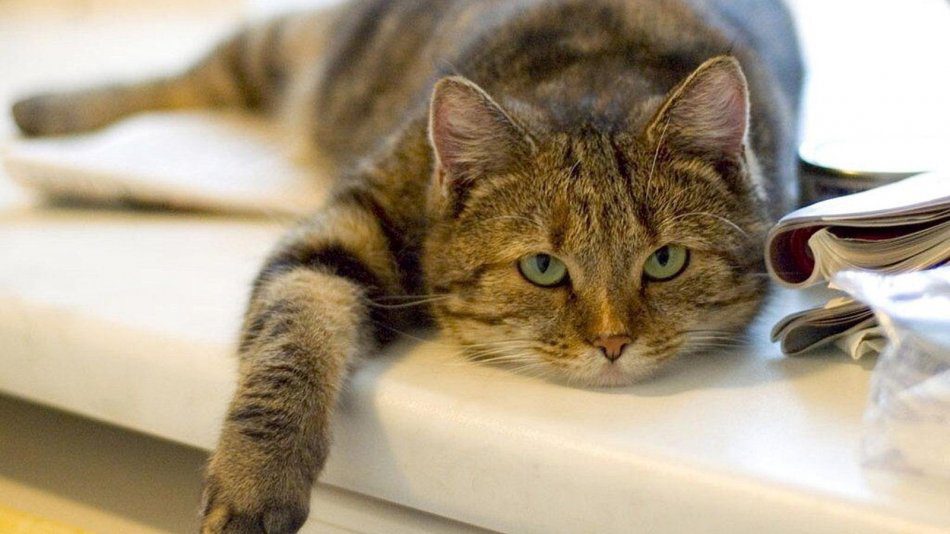
Symptoms of urolithiasis in cats
- Frequent licking under the tail.
- Frequent urination (for a long time and in small portions).
- Admixture of blood in the urine.
- Soreness when urinating (in the process, the cat screams).
- The cat becomes unclean.
- Urinary incontinence.
- Depressed state.
- Weight loss.
- Lack of urination.
- Fainting.
- Vomiting, convulsions.
Often the initial stages of the disease are asymptomatic.
Diagnosis of urolithiasis in cats
The diagnosis of “urolithiasis in a cat” can be made by an experienced specialist, based on the results of studies:
- Palpation of the abdominal cavity.
- pH test of urine.
- Ultrasound.
- X-ray.
In diagnosis, it is important to differentiate urolithiasis from cystitis.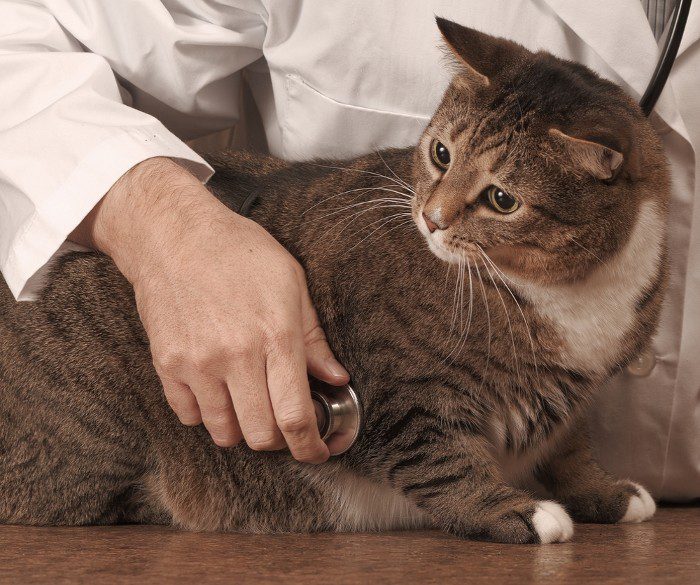
Treatment of urolithiasis in cats
Is it possible to cure urolithiasis in a cat?
You can!
Only a veterinarian can prescribe the correct treatment for urolithiasis in a cat or cat, and you need to strictly adhere to the recommendations.
Is it possible to treat urolithiasis in cats at home with folk remedies?
Not! In this case, there is a high risk of complications: rupture of the urethra, layering of a secondary bacterial infection, blockage of the urinary canals, etc.
Therefore, it is better not to take risks and, if alarming symptoms appear, contact the veterinarian as soon as possible!
But you can carry out the prevention of the disease yourself.
Prevention of urolithiasis in cats
Goal prevention of urolithiasis in cats – to prevent the development of the disease. Prevention includes:
- Complete nutrition for your cat.
- Plentiful pure drink.
- Control of body weight of a cat.
- Maintaining the microclimate in the apartment.
